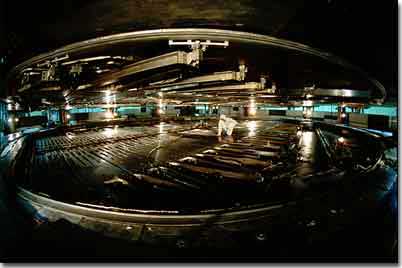The World's Largest Cyclotron

To appreciate the scale of the large TRIUMF cyclotron, note the worker, dressed in a white clean-room suit, checking the internal vacuum chamber for "wear and tear" that could inhibit the accelerating proton's path. Photo courtesy of TRIUMF
If you are asked how a watch works, one of the first things you might do is open one up and look at the parts inside. This is exactly what physicists have been doing to atoms for decades now. Using particle accelerators, researchers bombard atoms with tiny probes, such as protons or electrons. Modern accelerator designs generally fall into two categories-linear and circular. As their names suggest, linear accelerators, or linacs, accelerate particles along a straight path, while circular accelerators accelerate particles in a circular orbit. The prototypical circular accelerator is the cyclotron. Your computer monitor, a very simple linear accelerator, accelerates electrons from the electron source in the back to the screen in the front to energies up to 30,000 electron volts. By comparison, the world's largest cyclotron—TRIUMF—accelerates protons to energies up to 520,000,000 electron volts. At maximum energy the protons are travelling at 75% the speed of light, fast enough to take you from the earth to the moon in 2 seconds.











